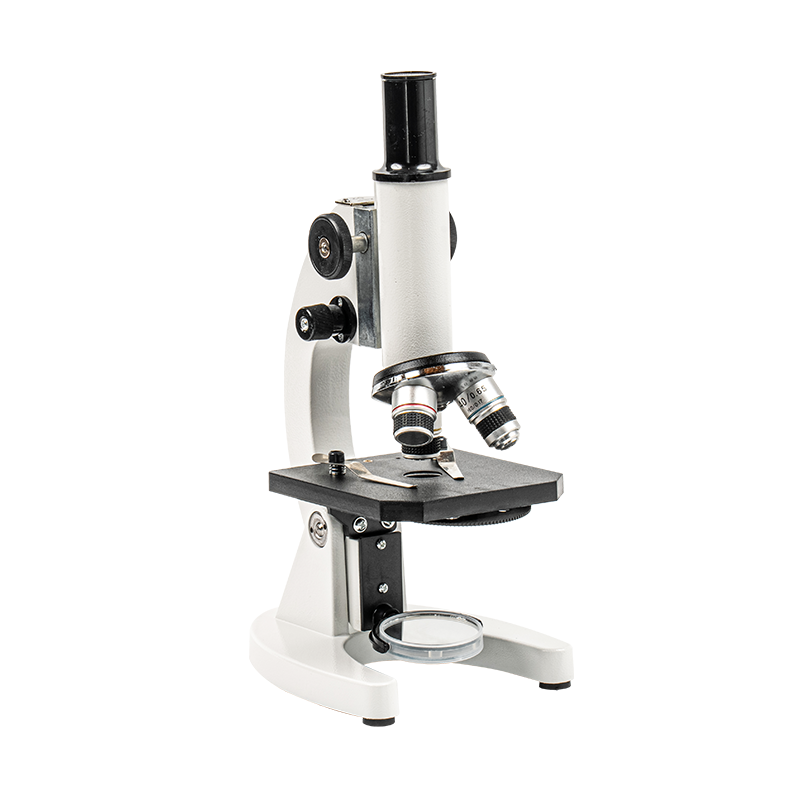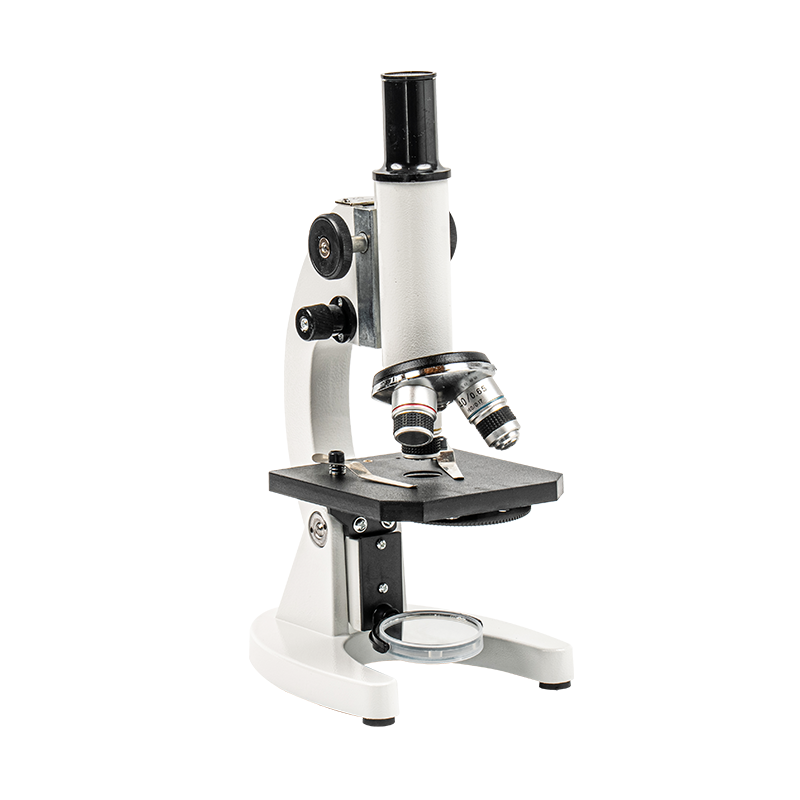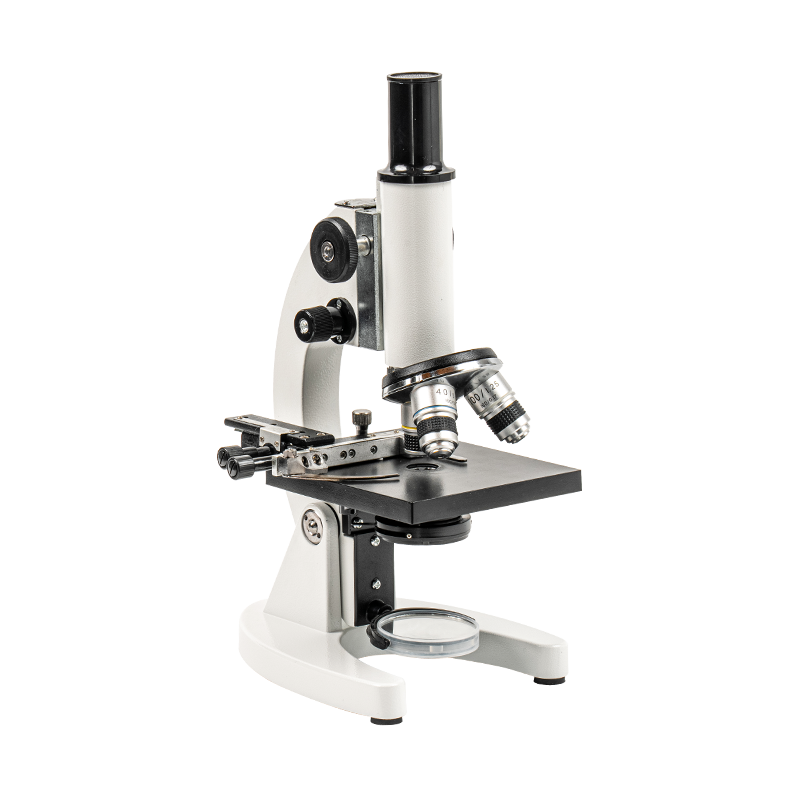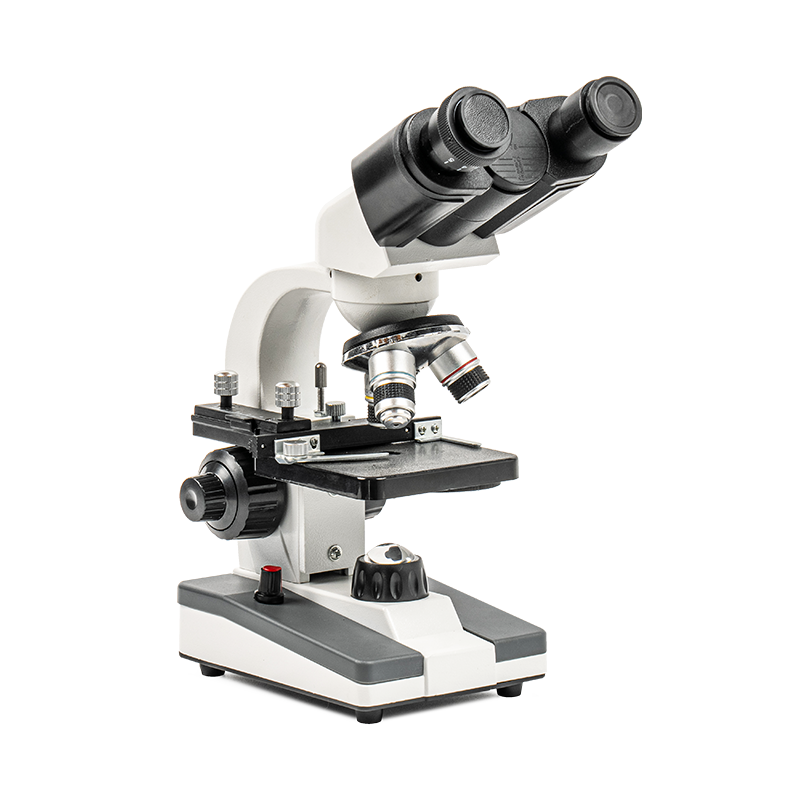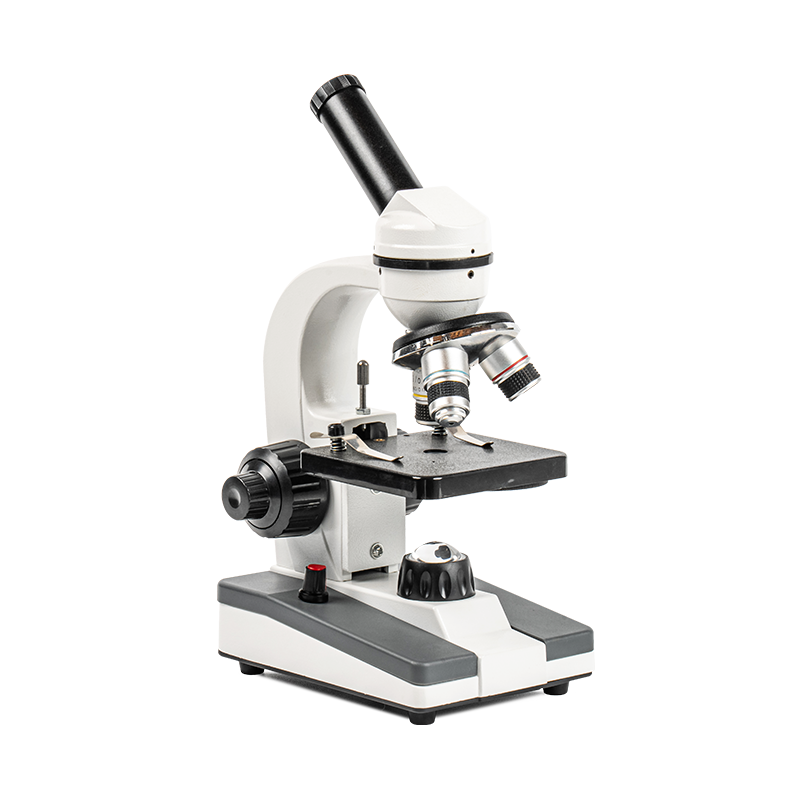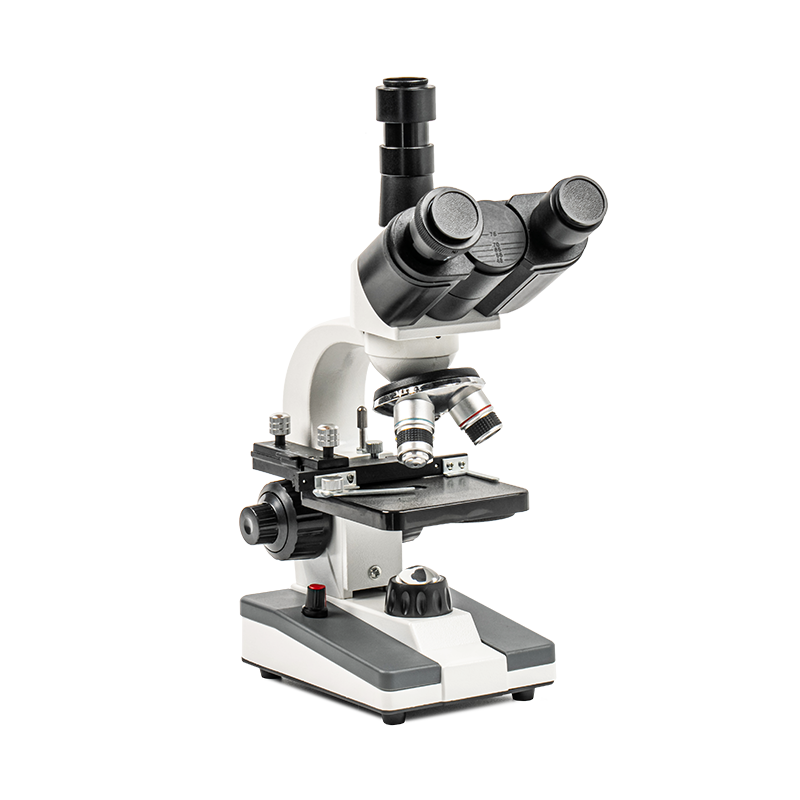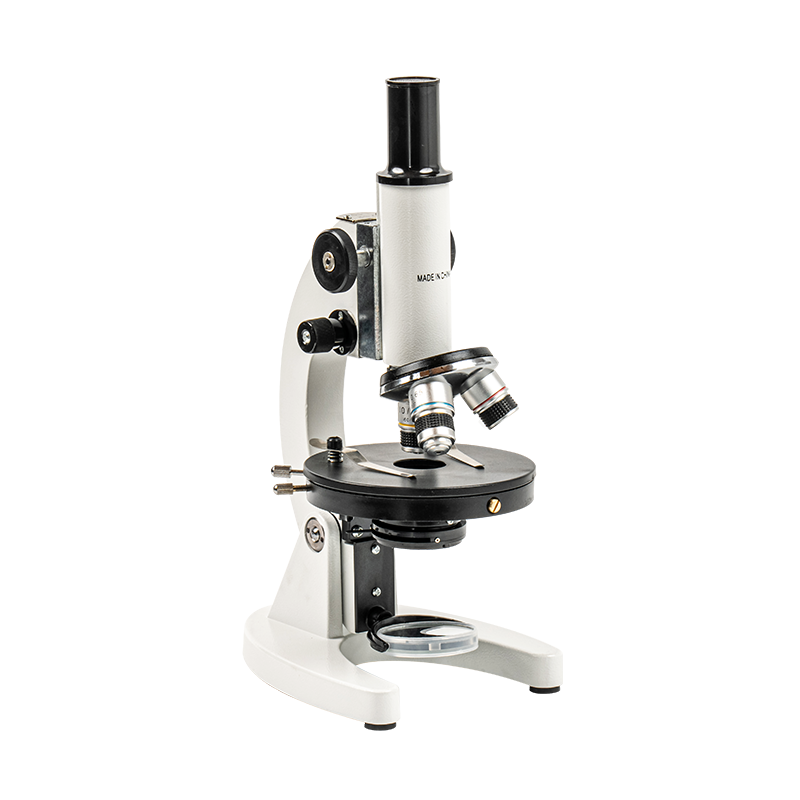Microscopes are essential tools in biological research, helping scientists explore the microscopic world and observe the structure and function of living organisms such as cells, tissues, and microorganisms. Although binocular microscopes and electron microscopes have become increasingly popular with advances in science and technology, monocular microscopes continue to play a vital role in biological research due to their simplicity, affordability, and ease of operation. In particular, in fields such as cytology, microbiology, botany, and zoology, monocular microscopes have become core tools in basic research and teaching.
Content
- 1 Basic Principles and Technical Features of Monocular Microscopes
- 2 Application areas of monocular microscopes in biological research
- 2.1 Cytological research: exploration of cell structure and function
- 2.2 Microbiology research: observation of microbial morphology and growth
- 2.3 Botanical research: analysis of plant structure and disease
- 2.4 Zoological Research: Structural Analysis of Animal Cells and Tissues
- 2.5 Teaching and Education: Basic Laboratory Teaching Tools
- 3 Advantages and future prospects of monocular microscopes in biological research
Basic Principles and Technical Features of Monocular Microscopes
A monocular microscope is a device that uses optical lenses to magnify tiny objects. Its basic structure consists of a tube, an objective lens, an eyepiece, a focusing mechanism, and a light source system. Its operating principle is based on the refraction and magnification of light: the objective lens magnifies the object and projects it into the eyepiece, which further magnifies the image and focuses it for the eye. Monocular microscopes typically have magnifications between 10x and 1000x, enabling clear visualization of details in tiny objects such as cells and microorganisms.
Because monocular microscopes are small, inexpensive, and easy to operate, they are widely used in biology, medicine, and education. Although the resolution is relatively low, its imaging quality is sufficient to meet the needs of many basic research and daily experiments.
Application areas of monocular microscopes in biological research
Cytological research: exploration of cell structure and function
Cytological research is committed to revealing the structure, function, and interactions of cells. In this regard, monocular microscopes, as the most basic observation tool, play a vital role. Through high-power objective lens magnification, researchers can clearly observe the basic components of cells, such as cell membranes, cell nuclei, mitochondria, endoplasmic reticulum, ribosomes and other structures.
Especially in the study of cell division, monocular microscopes can help scientists observe different stages of the cell cycle, such as mitosis and meiosis. This is of great significance for understanding cell proliferation, gene transfer, and material metabolism. Although modern technology has more advanced microscope equipment, monocular microscopes are still an indispensable tool in cytological research due to their high cost performance.
Monocular microscopes are also widely used in cell pathology. For example, in cancer research, researchers can use a monocular microscope to observe abnormally proliferating cells and mutated cells, helping to detect cancer or other pathological conditions at an early stage. Its ease of use and low cost make it an essential tool for basic laboratory research.
Microbiology research: observation of microbial morphology and growth
Microbiology research focuses on the morphology, classification, function, and interaction of microorganisms (such as bacteria, fungi, viruses, etc.) with their hosts. The role of a monocular microscope in microbiology is crucial, especially in the morphological observation of microorganisms such as bacteria and fungi.
For example, the morphological classification of bacteria is one of the important tasks in microbiology. Using a monocular microscope, researchers can observe the shape of bacteria (spherical, rod-shaped, spiral-shaped, etc.) and the presence of special structures (such as flagella, spores, etc.). This information provides basic data for the classification and identification of bacteria and the study of their pathogenic mechanisms.
For the observation of fungi, a monocular microscope can help researchers understand the spore morphology, hyphae growth, and interactions of different types of fungi with host plants or animals. Through the monocular microscope, scientists can also study the growth pattern, reproduction process and environmental adaptability of microorganisms. In virus research, although the monocular microscope cannot directly observe the virus itself, it can still provide basic materials for virology research by observing the process of virus invasion of host cells, virus particles in cells and cell reactions. For the preliminary screening of some viruses, the monocular microscope is still one of the most effective tools.
Botanical research: analysis of plant structure and disease
The application of monocular microscope in botanical research is also very extensive, especially in the study of plant cells, tissues and pathology. In the field of botany, the monocular microscope can help researchers observe the basic structure of plant cells, such as cell walls, chloroplasts, stomata, intercellular spaces and other structures. This is crucial for a deep understanding of plant photosynthesis, metabolic processes and growth and development. Especially in the field of plant pathology, the monocular microscope is widely used to observe pathogens and their infection mechanisms in plant tissues. Through the microscope, researchers can find the presence of pathogens, fungi, viruses and other disease factors in plant cells, thereby diagnosing and preventing plant diseases. For example, observing the diseased parts of plants can help analyze how pathogens enter the plant through the cell wall and how they spread between tissues. In plant reproduction research, monocular microscopes can help scientists observe processes such as seed germination, root growth, and pollen development, which is of great significance for research on plant cultivation technology and genetic improvement.
Zoological Research: Structural Analysis of Animal Cells and Tissues
In zoological research, monocular microscopes are widely used to observe animal tissues, cell structures, and physiological functions. In animal histological research, microscopes are used to analyze the characteristics of different types of cells and tissues, helping scientists to reveal the relationship between their structure and function. For example, by observing the structure of muscle cells and the distribution of nerve cells through a monocular microscope, we can gain a deep understanding of the physiological mechanisms and tissue characteristics of animals. In animal pathology, monocular microscopes are key tools for analyzing pathological changes and diagnosing diseases. Pathologists diagnose various diseases, such as tumors and infectious diseases, by observing diseased cells and pathogenic microorganisms in animals. Monocular microscopes can also be used in parasitology research to help observe the life cycle, morphology, and effects of parasites on host animals.
Teaching and Education: Basic Laboratory Teaching Tools
One of the biggest advantages of the monocular microscope is its convenience and low cost, which makes it play an important role in teaching and education. Especially in the basic education stage, the monocular microscope is an important tool for students to understand the microscopic world and cultivate their observation skills. Through the microscope, students can observe the morphology of cells, microorganisms and other tiny organisms, thereby deepening their understanding of biological knowledge.
In many middle schools and university biology experiment courses, the monocular microscope is widely used in basic biology teaching. By operating the microscope by themselves, students learn how to prepare specimens, how to adjust the focus, and how to observe the structure and function of different objects. This not only cultivates their experimental skills, but also stimulates their interest in biology.
Advantages and future prospects of monocular microscopes in biological research
Despite the continuous development of modern microscope technology, the monocular microscope still has unique advantages. It is simple to operate, low cost, and compact, and is suitable for most basic research and educational experiments. Especially for schools and research institutions, the monocular microscope is an extremely cost-effective tool, widely applicable in fields such as cytology, microbiology, and botany.
In the future, with the continuous advancement of optical technology, the resolution and imaging quality of monocular microscopes will continue to improve. Furthermore, the introduction of digital microscopes and automation technology will make the use of monocular microscopes even more efficient and convenient. The addition of intelligent features, such as autofocus and real-time image analysis, can greatly improve scientific research efficiency and provide more accurate data support for biological research.

 English
English Español
Español عربى
عربى 中文简体
中文简体